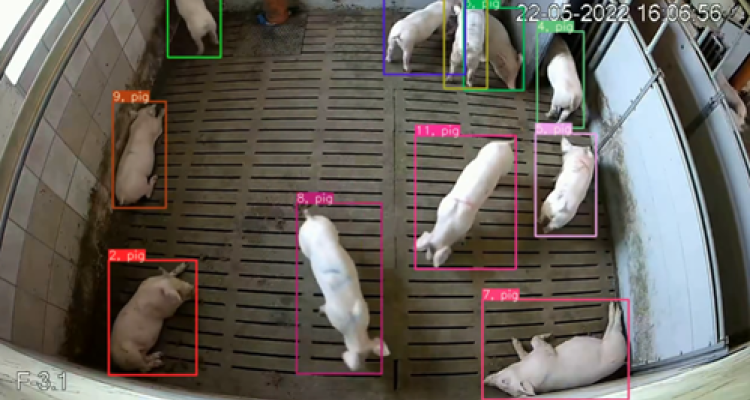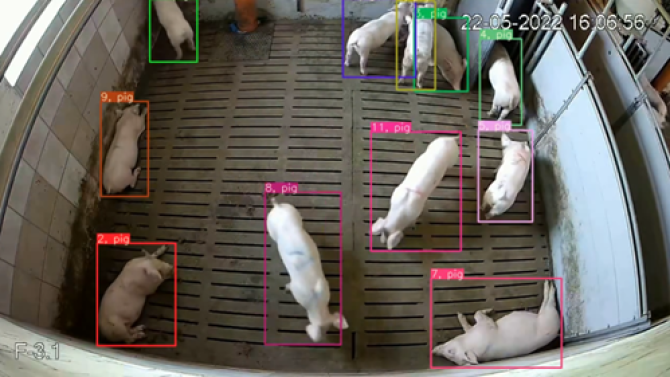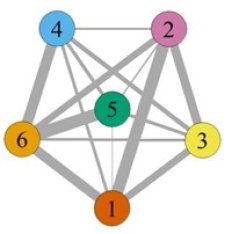
Project
Behavioural studies on the emergence and spread of (harmful) behaviours in pigs
By Clemence Orsini
Tail biting is a major animal welfare and economic issue in modern pig production. This damaging behaviour may occur in isolated cases or drastically escalate and spread within groups. The underlying drivers of this behaviour remain unclear: an increased incidence has been associated with external factors (such as high stocking densities, imbalanced diet, poor environment), but internal motivators may also be involved.
Preventing tail biting without resorting to tail docking is a considerable challenge, and therefore the objective of this project is to get a better understanding of the mechanisms by which individuals affect and respond to each other’s behaviours and how this subsequently affects the emergence and spread of tail biting. Hereto, in the IMAGEN project, we collaborate with artificial intelligence experts who are developing an algorithm based on computer vision to track individuals and automatically detect tail biting.
Computer vision tracking algorithms allow for the collection of high-resolution data by by providing the location of individuals in each frame. This data can be used to calculate proximity between individuals, activity levels, and space occupation. Changes in these behavioural parameters may help to predict the escalation of tail biting behaviour.
However, using tracking data requires researchers to make numerous decisions regarding data collection and analysis. As a first step, we will examine how different proximity definitions and sampling rates affect proximity social networks in pigs using a tracking-by-detection method with bounding boxes. Networks will be constructed using varying proximity definitions (either based on distances between the centers of individuals or the overlap of bounding box surfaces) and different sampling rates achieved through downsampling. The effect of the proximity definitions and downsampling will be assessed by comparing network metrics.


Next, we will investigate whether the structure of the social network is consistent across time and influenced by individual characteristics. Social network analysis (SNA) will be performed both on the spatial proximity between individuals (extracted from the individual tracking) and on manual annotations of social behaviours (which will also contribute to developing a behaviour algorithm). We will study the spread of tail biting outbreaks across time and whether the role of individuals (victim, biter) is consistent and related to individual characteristics by using SNA.
Lastly, we will investigate whether tail damage can be predicted by early behavioural changes identified through computer vision tracking. Pens with high levels of tail damage will be selected and compared to control pens. A tracking algorithm will be applied to several days of videos around the time tail damage occurs. Behavioural changes will be assessed both at the pen and individual levels by analyzing shifts in activity patterns, distances between pen mates, and space occupation over time.